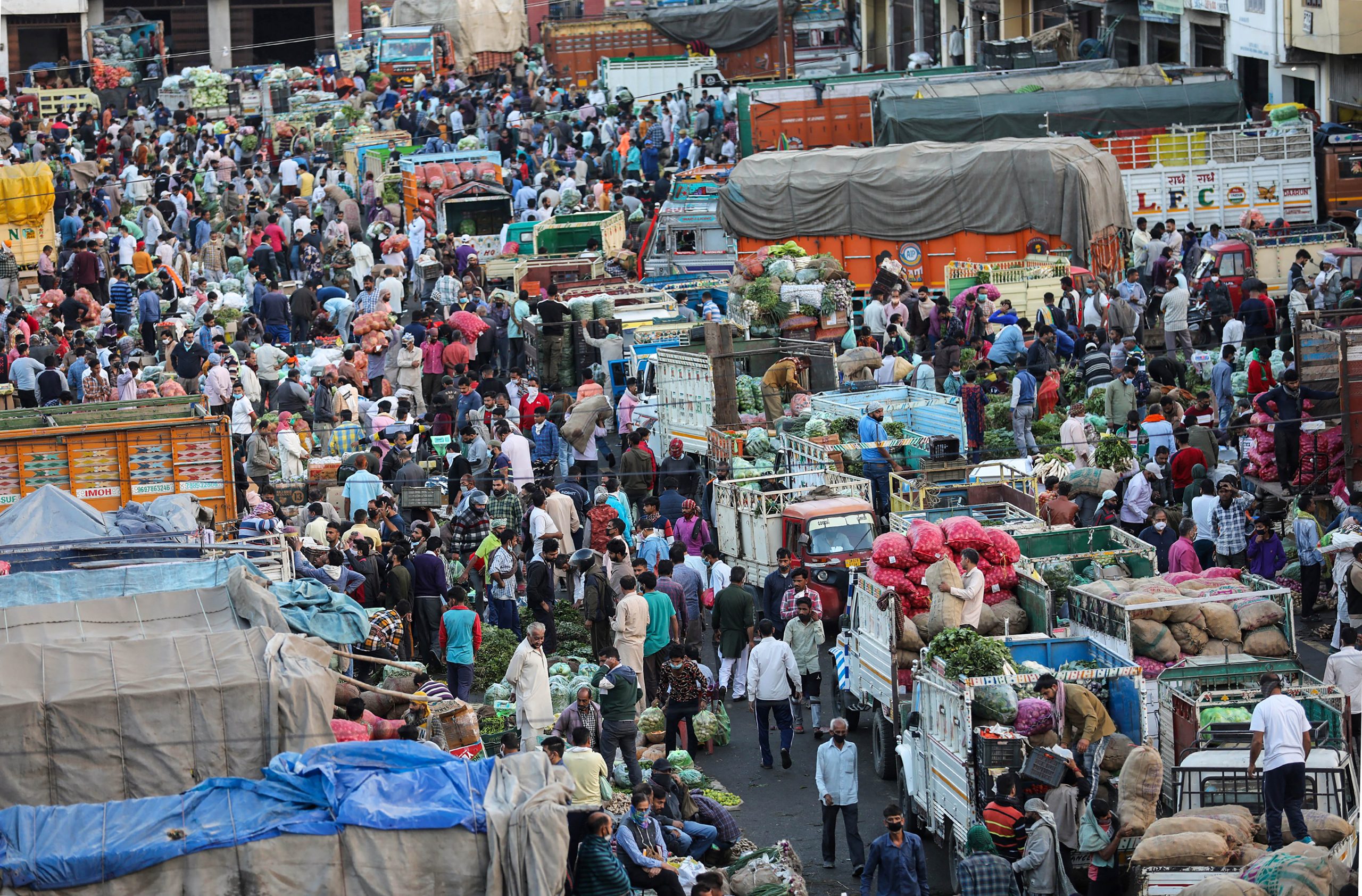The alphabetical allusions to India%u2019s %u201Csharp%u201D economic recovery in 2020-21 have all but stopped. No one is now speaking about this country overtaking others, especially those seen as Emerging Market (EM) peers, in growth in the near term and whispers about the need for yet another stimulus package have already begun. As India is faced with a second, more lethal wave of the COVID-19 infection, worries about the economic impact have quickly grown manifold.
In any case, it is a foregone conclusion that mini lockdowns or restrictions on the movement of goods and people %u2013 whether local or broader %u2013 have an immediate and disproportionately large impact on the economy. So even when there may be no similarity between the %u201Cworld%u2019s harshest%u201D lockdown India saw during the same time in 2020 and the present localised lockdowns, jobs, factory output, services and businesses at large will surely suffer.
How bad is the situation? The mega-events such as Kumbh Mela and election rallies in several states are likely to have already facilitated the spread of this deadly virus to India%u2019s hinterland. Remember, this is precisely what India had managed to stall the last time with a very harsh and complete lockdown. The fallout of this scenario could be a stalling of the rural economy, unlike the first wave where the rural engine remained robust even as the urban markets collapsed.
Also, an analysis by brokerage Edelweiss found that India%u2019s experience with the second COVID wave could be more like Europe%u2019s instead of mirroring what happened during the second wave to the United States%u2019 economy. While both, Europe and the US, witnessed stalled economic momentum as the services sector was hit much harder than industry, the US economy fared much better. %u201DThe US economy was on a much better footing going into the second wave and restrictions were less severe than in Europe. Also, the US went for an aggressive fiscal response compared to Europe, helping safeguard households%u2019 confidence and incomes. This allowed US households to divert spending towards the goods sector (versus services) during the second wave. Finally, faster vaccination in US versus Europe may have also helped,%u201D the analysts have said.
Also read: Monetary Policy: EMIs unlikely to go up as COVID-19 cases spike
In India, the second wave of infections has arrived when the pace of economic recovery after the first one has been uneven; labour intensive small and micro industries are yet to emerge from the devastation from the first wave even as larger corporates have dealt with the slowdown much more effectively; and the spill over from %u201Cglobal reflation%u201D (expansion in global output due to various central banks stimulating the economies of their respective countries with stimulus packages) into India%u2019s real economy has been slower than expected so far.
Another analysis by analysts at brokerage Ambit has given a thumbs down to rising inflation and weak credit growth amid spiking infections while also mentioning the positives: robust growth in GST collections and factory output in the last one month.
But the government continues to believe that all is well. In its latest monthly report, the Department of Economic Affairs (DEA) has said that despite the surge in infections, the economic recovery has been resilient with sustained improvement in the majority of high-frequency indicators. Our granaries are full, with record foodgrain production, the rural jobs guarantee scheme (MNREGA) has generated all-time high employment last fiscal and the vaccination drive is in full force.
While the factory output indicator has shown some weakness, this report has emphasised that manufacturing sector conditions %u201Ccontinue to improve sharply, outpacing the long-run series average with firms scaling up production and witnessing an upturn in sales.%u201D
Also read: Falling markets: Caution is the key, earnings may bring positive surprise
The DEA has further said that wheels of India%u2019s capex cycle have been set into motion and this would become evident from the second half of the year (September 2021 onwards) and that India is %u201Cwell armed to combat any downside risk posed by the recent surge in COVID-19 cases.%u201D
A third brokerage, Prabhudas Liladhar, has pointed out that in the US, Russia and Europe, daily infection case additions in second and third waves have been up to two times the first wave of infections. %u201CThe (current) wave has lasted 2-3 months and is still continuing in most of Europe. The third wave has been bigger in UK and Spain, while it has been 50-66% in France and Italy,%u201D the analysts noted. If the same pattern will be seen in India, with higher caseload than in the first wave and possibly worsening fatality rates, the economic impact will obviously be more stark than anticipated till now.
%u201CThe Indian economy is on a firm recovery and the Union Budget has boosted prospects due to significant capex boost, PSU divestment plan and RBI%u2019s resolve to maintain an accommodative monetary policy stance. However, the sharp spike in Covid 19 cases is likely to disturb growth momentum in the near term. We believe Q1 FY22 (April-June) presents challenges, given expected lockdowns due to the second wave.%u201D
Also read: India out of recession but recovery remains tentative
The smart thing to do for the government at this crucial juncture in the second wave of infections would be to speed up the vaccination drive by making more vaccines available and widening the reach of existing ones; continuing with its expenditure programme and thinking in terms of another stimulus package to boost output.
#covid19 #Economy #India #Coronavirus #Health #UnitedStates #Europe







